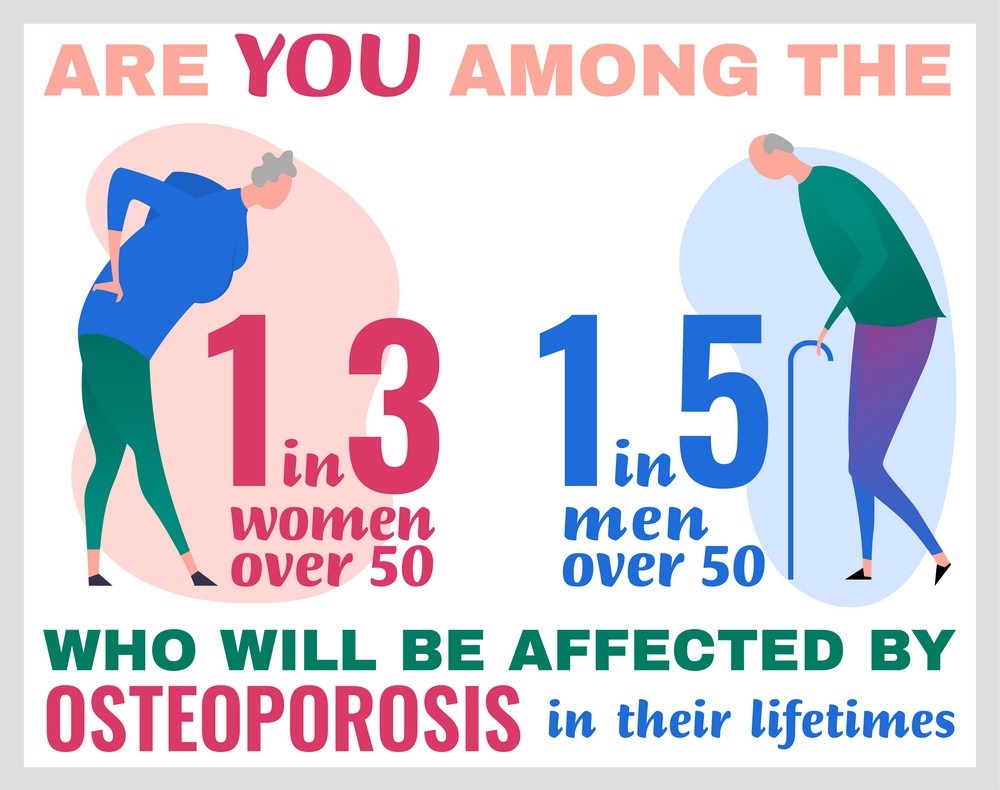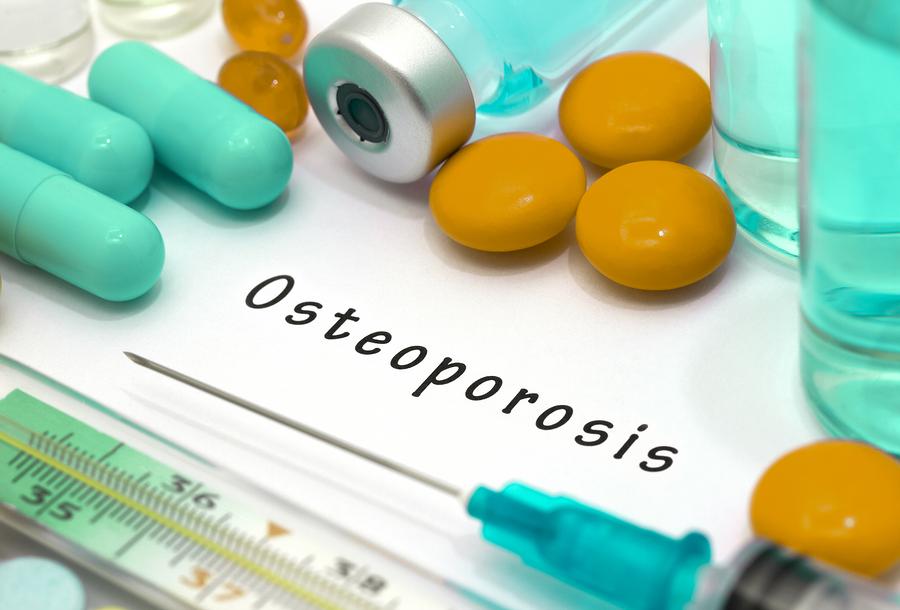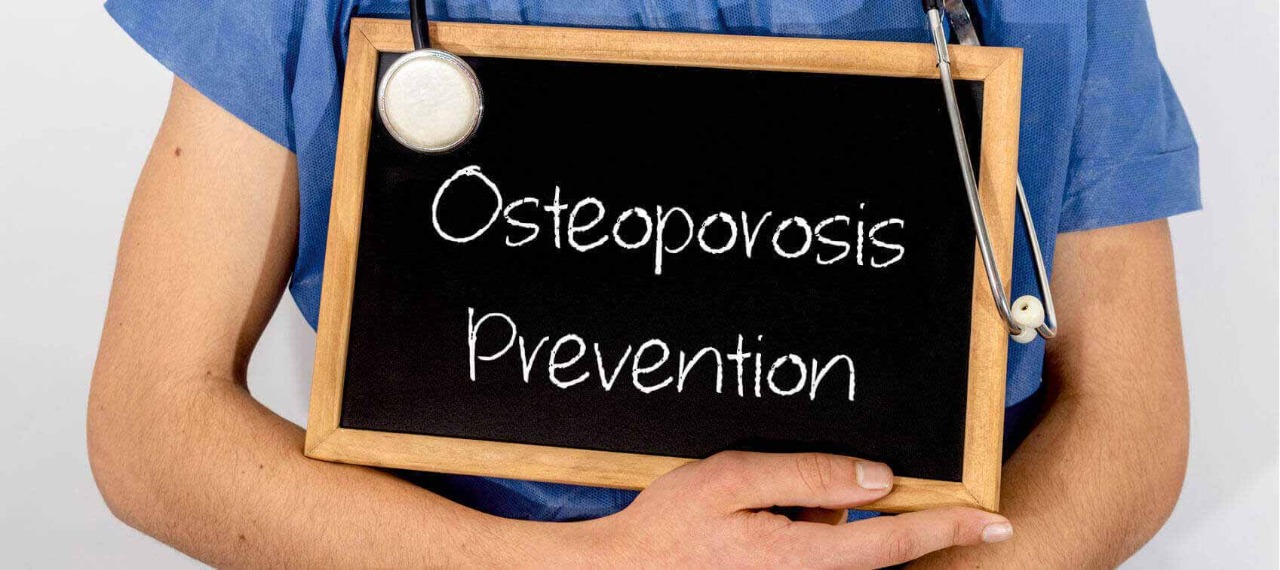What Are Some Risk Factors For Osteoporosis?
Houston Endocrine Center2022-06-25T17:15:33+00:00
Source: VectorStock
Osteoporosis is a disease that makes bones weaker and more fragile. It weakens the structure of your skeleton and can lead to back pain, stiffness, or fractures. While it can be caused by many different factors, including age, gender, family history, and lifestyle, there are also some risks that you have no control over, such as being of Caucasian descent or having parents who were both affected by the disease.
In this article, we explore some risk factors for osteoporosis and how you can prevent it!
What Is Osteoporosis?
Osteoporosis is a condition that affects the bones, causing them to become thin and brittle. This can lead to a number of problems, including fractures, pain, and loss of height. While osteoporosis can affect people of any age, it is most common in older women over the age of 50, but it can also affect men and people of all ages. There are many things that can contribute to osteoporosis, including family history, a sedentary lifestyle, certain medications, and smoking.

Source: Onto Orthopedics
There are a number of factors that can contribute to the development of osteoporosis, including a lack of calcium in the diet, family history, a sedentary lifestyle, smoking, and certain medications. There are several ways to prevent or treat osteoporosis, including exercise, dietary changes, and medication.
There are many things you can do to prevent or slow the progression of osteoporosis. Getting enough calcium and vitamin D, exercising regularly, and not smoking are all important. You can also talk to your doctor about medications that can help keep your bones strong.
Why Is Osteoporosis A Problem?
Osteoporosis is a problem because it leads to bone loss and fractures. Bone loss can occur for a variety of reasons, including lack of exercise, poor nutrition, and hormonal changes. Fractures are a common complication of osteoporosis, and they can be very painful. Fractures can also lead to other problems, such as immobility and disability.

Source: VectorStock
Osteoporosis is especially a problem for older adults, who are more likely to suffer from falls and other accidents. Additionally, osteoporosis can make it difficult to do everyday activities like carrying groceries or going up and down stairs.
Osteoporosis can be expensive to treat, especially if you need medication or surgery. There are treatments available that can help strengthen bones and reduce the risk of fractures, but it is important to get diagnosed early so that treatment can be started as soon as possible.
The Different Types Of Osteoporosis

Source: VectorStock
There are four different types of osteoporosis, and each type has its own set of causes and symptoms. The five types of osteoporosis are:
1. Idiopathic Osteoporosis
This type of osteoporosis is the most common form of the disease and occurs as a result of genetics. It is also called inherited osteoporosis. This condition can affect both men and women, but it is more common in women. In this type of osteoporosis, the bones become fragile and break easily because they have lost their mineral content (bone mineral density) and density due to age-related bone loss.
2. Postmenopausal Osteoporosis
Postmenopausal osteoporosis is the most common type of disease, affecting more than 8 million American women. This type of osteoporosis is caused by the loss of estrogen after menopause. Estrogen helps to keep bones strong, so when levels start to decline after menopause, bones can become weak and fragile. Symptoms of postmenopausal osteoporosis include bone pain, fractures, and a decrease in height.
3. Secondary Osteoporosis
This type of osteoporosis is caused by another medical condition or by taking certain medications. Conditions that can lead to secondary osteoporosis include celiac disease, rheumatoid arthritis, and thyroid problems. Medications that can cause secondary osteoporosis include corticosteroids and cancer treatments.
4. Senile Osteoporosis
Senile osteoporosis is the second most common type of disease, affecting more than 3 million Americans over the age of 50. This type of osteoporosis is caused by the natural aging process. As we age, our bones can become thinner and weaker due to the loss of bone mass. Symptoms of senile osteoporosis can include fractures, a loss of height, and back pain.
5. Juvenile Osteoporosis
This type of osteoporosis tends to develop during adolescence or early adulthood. It is caused by exposure to certain drugs in childhood, such as corticosteroids, sex hormones, and vitamin D supplements during puberty or early adulthood, which cause bone loss, also known as rickets in children. Although rare, this type of osteoporosis can also occur as a result of hereditary factors.
Risk Factors for Osteoporosis

Source: VectorStock
-
Diet, Exercise, And Other Factors
A lack of physical activity can also contribute to the development of osteoporosis, as it leads to muscle weakness and a decrease in bone density. Poor nutrition is another factor that can impact bone health, as a diet lacking in essential nutrients like calcium and vitamin D can lead to weak bones.
-
Family History
Having a parent with osteoporosis increases a person’s risk of developing it as well as having osteopenia (a lower than normal bone density). Having a family history of osteoporosis also increases one’s risk of developing it later in life if no other factors are involved.
-
Gender
Females are at greater risk than males for developing osteoporosis because they have a higher rate of bone loss than men during menopause.
-
Pregnancy And Lactation
Pregnancy and lactation may increase your risk for postmenopausal osteoporosis if you don’t take enough calcium or if you lose too much calcium from your bones during pregnancy or lactation.
-
Lifestyle Choices
Certain lifestyle choices can also increase your risk of developing osteoporosis. These include smoking, drinking too much alcohol, not getting enough exercise, and eating a diet that’s low in calcium and vitamin D. If you have any of these risk factors, it’s important to make changes to your lifestyle to lower your risk.
-
Obesity
Excess fat around the hips and thighs can put pressure on the bones, making them more likely to break.
-
Age And Hormones
If you’re over the age of 50, your risk of developing osteoporosis increases. Women are also at higher risk than men due to hormone changes during menopause.
-
Race And Ethnicity
Caucasians have an increased risk of osteoporosis compared with African-Americans and Hispanics/Latinos. However, the rate of osteoporosis among Asian Americans is lower than that of white Americans, although there are no studies specifically focused on this group’s risk for developing this condition.
-
Alcohol
Drinking alcohol can increase your risk of osteoporosis because it increases calcium loss. This is because alcohol makes your body absorb more calcium than normal. Alcohol also acts as an anticoagulant (blood thinner), which may increase your risk of fractures. Alcohol is also a diuretic, meaning that it causes you to urinate more frequently, leading to excessive loss of calcium from your body.
-
Cigarette Smoking
Smoking cigarettes increases your risk of bone loss by reducing bone density and increasing fracture risk. Smoking also causes constriction of blood vessels and inflammation in soft tissue, both of which can damage your bones.
-
Inactivity
Being inactive for long periods of time puts extra stress on the bones, making them more likely to break or become brittle due to lack of exercise or stress from everyday living activities.
-
Excess Estrogen
Excess estrogen from excess fat cells can lead to low amounts of testosterone and other hormones that help maintain bone density.
-
Caffeine
Caffeine can increase your risk of bone loss by depleting calcium from your bones. If you consume more than 300 mg of caffeine per day, your risk of osteoporosis increases by up to 50%. Caffeine may also make it harder for your body to absorb minerals like zinc and magnesium.
-
Alcohol
Consuming alcohol can cause osteomalacia (softening of the bones), which may cause fractures later on in life. Alcohol also impairs the absorption of certain nutrients like calcium and magnesium. These nutrients are essential for building strong bones.
-
Marrow Depletion
Women who have had their ovaries removed may be at risk for osteoporosis due to low levels of estrogen, which is needed for healthy bones.
-
Certain Medical Conditions
There are also certain medical conditions that can increase your risk of developing osteoporosis. These include thyroid problems, rheumatoid arthritis, celiac disease, and type 1 diabetes. If you have any of these conditions, be sure to speak with your doctor.
Preventing Osteoporosis Without Medication

Source: Healthy Directions
The good news is that there are many ways to prevent osteoporosis without taking drugs:
- Eat a healthy diet
- Eat calcium-rich foods like milk products, tofu, and dark leafy greens.
- Exercise regularly and maintain a healthy weight.
- Get enough sleep
- Take breaks from sitting down (Standing up every hour or so can help reduce these problems).
- Don’t smoke cigarettes or use other tobacco products (including chewing tobacco).
- Avoid excessive alcohol consumption (more than two drinks per day).

Source: VectorStock
Conclusion
Osteoporosis is a disorder caused by old age which causes the bones to become brittle and weak. It’s characterized by deformed or brittle joints and an increased likelihood of bone fractures which can lead to serious disability in some cases. Of course, while it’s not possible to stop the aging process, there are certain things you can do to protect yourself from developing osteoporosis.
